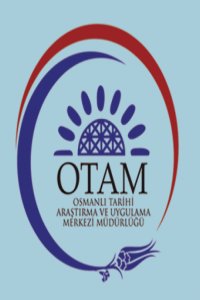An inquiry into the Ottomans’ knowledge and perception of the Gypsies in the late 19th Century
Bu çalışma 19. yüzyıl sonlarında Osmanlıların Çingeneler üzerine neler bildiklerini ve onları nasıl algıladıklarını/tanımladıklarını sorgulamayı amaçlamaktadır. Bu doğrultuda üç farklı metin incelenecektir. İlk metin, kurgusal olup hem popüler hem de bilimsel bilgiler içeren çok yönlü yazar Ahmet Mithat Efendi’nin Çingene (1887) isimli romanıdır. Mérimée’den esinlenen Ahmet Mithat romanında her ne kadar Çingenelere karşı toplumda var olan önyargıları geçersiz kılmayı hedeflese de, bunu yaparken Avrupalı yazarların metinlerinde aynı dönemlerde sıklıkla rastlanan stereotipleri yeniden üretmektedir. İkinci metin akademik olarak nitelendirilebilecek ve dolayısıyla bilimsel bir değeri olan Şemseddin Sami’nin Kamûsü'l-a،lâm adlı özel adlar sözlüğündeki (1891) “Çingâne” maddesidir. 19. yüzyıl Batılılaşma ruhuyla örtüşür bir biçimde Şemseddin Sami’nin “Çingâne” maddesini kaleme alırken kısmî olarak yararlandığı Avrupalı ansiklopedistlerin yarattıkları olumsuz Çingene imgesini kendi önyargılarıyla birleştirerek yeniden ürettiği görülmektedir. Üçüncü metin, yazarı tarafından da öne sürüldüğü üzere kişisel bilgi ve deneyimlerden yola çıkılarak üretilen bilginin bir ürünü olup, 1891’de Çingenelerin yaşam koşullarının iyileştirilmesi gerekliliğinin belirtilerek yerel yönetime sunulan Siroz mekteb-i i،dâdî-i mülkiyesi lisân-ı ‘Osmânî ve Fârisî mu،allimi Sa‘di Efendi’nin lâyihasıdır. Sa‘di Efendi’nin metni tamamıyla kişisel deneyimlere dayandığından, diğer iki Batı esinli metinde ortaya konulan Çingene algısını Doğulu yerel olan ile karşılaştırma olanağı sağlayacaktır. Aynı dönemde kaleme alınan ve yazılış amaçları farklılık gösteren bu üç metnin karşılaştırılması sadece Çingene algısı ve bu topluluğun Osmanlı İmparatorluğu’ndaki yaşam koşullarına dair ek bilgiler vermekle kalmayacak, aynı zamanda Osmanlılar tarafından nasıl bilindikleri ve daha da önemlisi nasıl tanımlandıkları konularına ışık tutacaktır. Her üç metindeki benzerlikler aslında Osmanlı toplumunda Çingenelere karşı varolan önyargıların ne kadar derin olduklarının görülmesi sonucuna varılmasına olanak sağlamaktadır
Anahtar Kelimeler:
Çingeneler, Önyargı, Stereotip, Osmanlı’da Çingene algısı, Çingenelik
An inquiry into the Ottomans’ knowledge and perception of the Gypsies in the late 19th Century
This paper aims to inquire the knowledge and the perception of the Ottomans on the Gypsy in the late 19th century. Three different texts will be examined in order to shed light on what the Ottomans knew about Gypsies during the aforementioned period. The first one, a fictional one, embodying both popular and scholarly knowledge is the novel GypsyÇingene (1887) of the prolific Ottoman author Ahmet Mithat Efendi. Ahmet Mithat, inspired by Mérimée, attempts to refute the prejudices against the Gypsies in his novel, albeit through the reproduction of the conventional Gypsy image found in the European texts of the 19th century. The second text, representing scholarly knowledge reclaiming scientific value, belongs to Şemseddin Sami (Fraschery) Efendi and is the “Gypsy-Çingâne” entry in his famous encyclopaedia-Kamûsü'l-a،lâm (1891). As a result of modernization and westernization, the text of Şemseddin Sami reproduces the negative image of the Gypsies generated by his European counterparts on whose texts he partially bases his work and on which he transposes his own prejudices. The last text based on practical and personal knowledge as it is claimed by its author, is a lengthy and detailed report (1891) underlining the urgency of improving the living conditions of the Gypsy population, submitted to the authorities by Sa‘di Efendi, an Ottoman-Turkish and Persian teacher at a secondary school in Serres-Greece. The report of Professor Sa‘di, as the only text to be written based on the personal experience of its author, will provide an opportunity to compare the local-eastern perception of Gypsies to the two other western-oriented texts. The analysis of these texts bearing three different kinds of knowledge and having thus three different objectives, will not only offer complementary information on the perception of Gypsies and on their living conditions in the Ottoman Empire, but will also throw light on how they were known and more importantly defined by the Ottomans: a definition more or less common in all three texts which shows how deeply rooted the prejudices against the Gypsies in the Ottoman Empire were
Keywords:
Gypsies, Prejudices, Stereotypes, Ottoman Gypsy Perception, Gypsyness,
- ISSN: 1019-469X
- Yayın Aralığı: Yılda 2 Sayı
- Başlangıç: 1990
- Yayıncı: Ankara Üniversitesi
Sayıdaki Diğer Makaleler
1897 Türk-Yunan Savaşı’nda ecnebilerin zararlarının tazmîni meselesi
Avrupalıların gözlemlerinde Osmanlı eğitimi ve bilimi (16 18.yüzyıllar)
Hüseyin Hilmi Paşa’nın Yemen Valiliği ve ona yapılan suikast
An inquiry into the Ottomans’ knowledge and perception of the Gypsies in the late 19th Century
